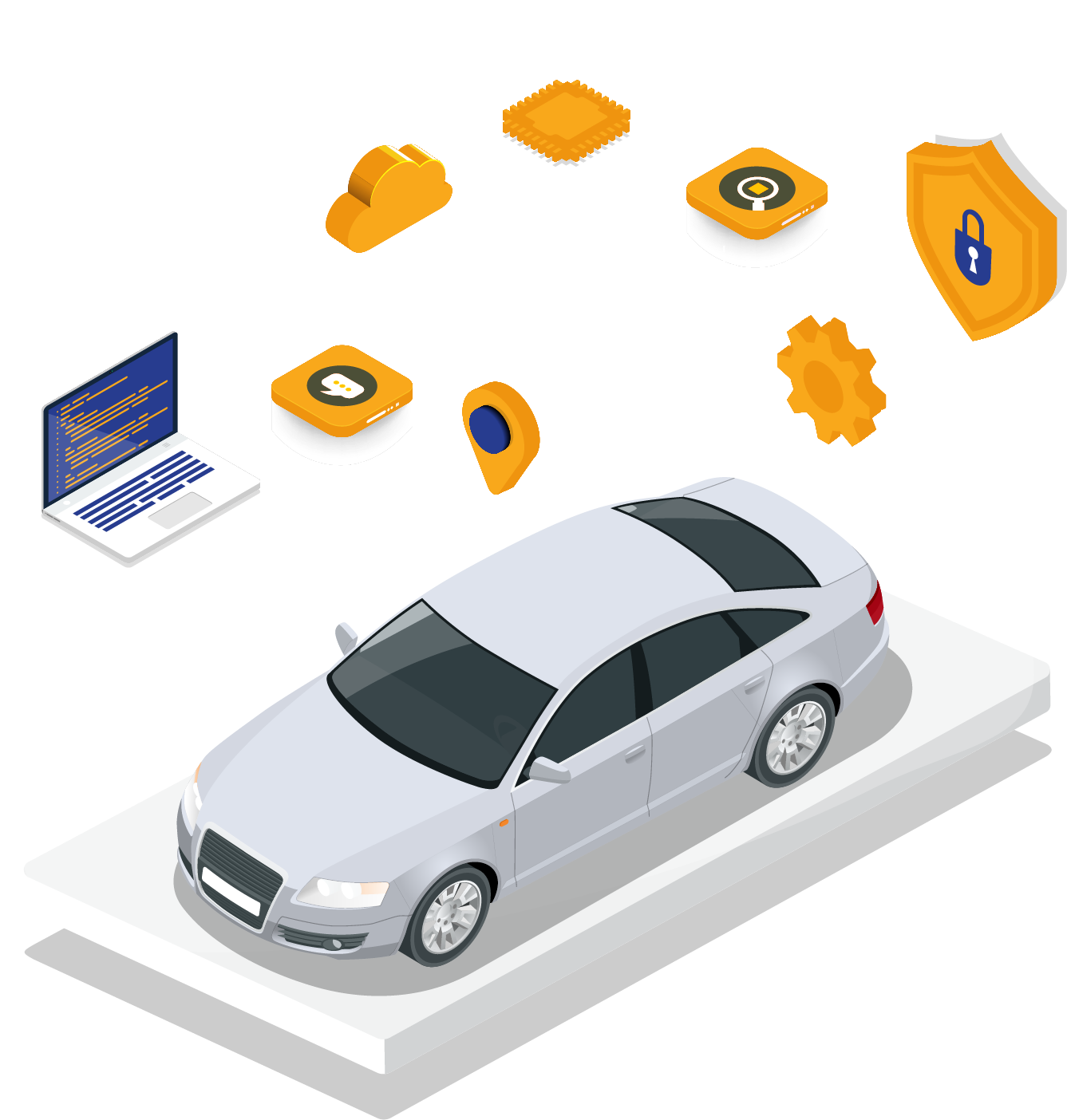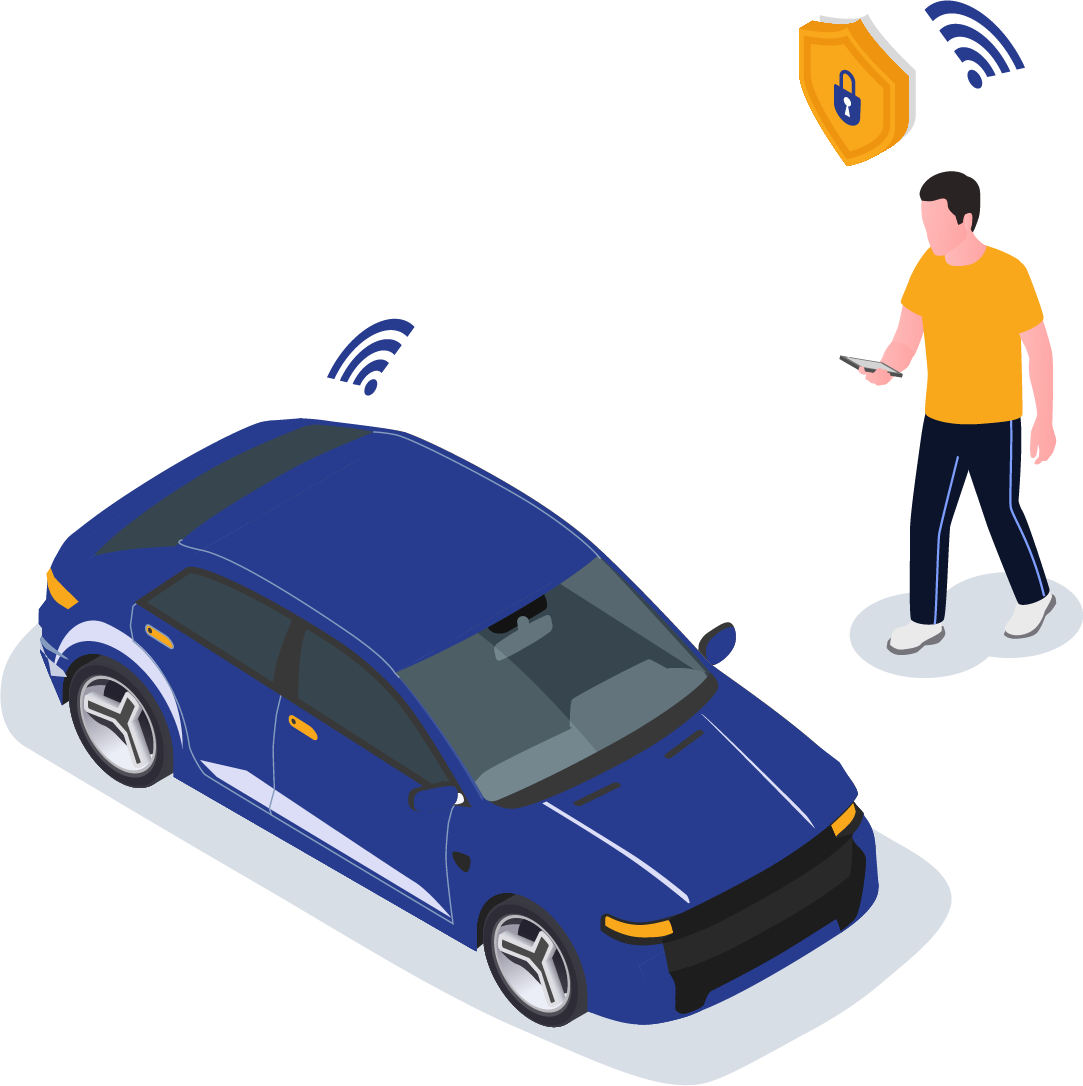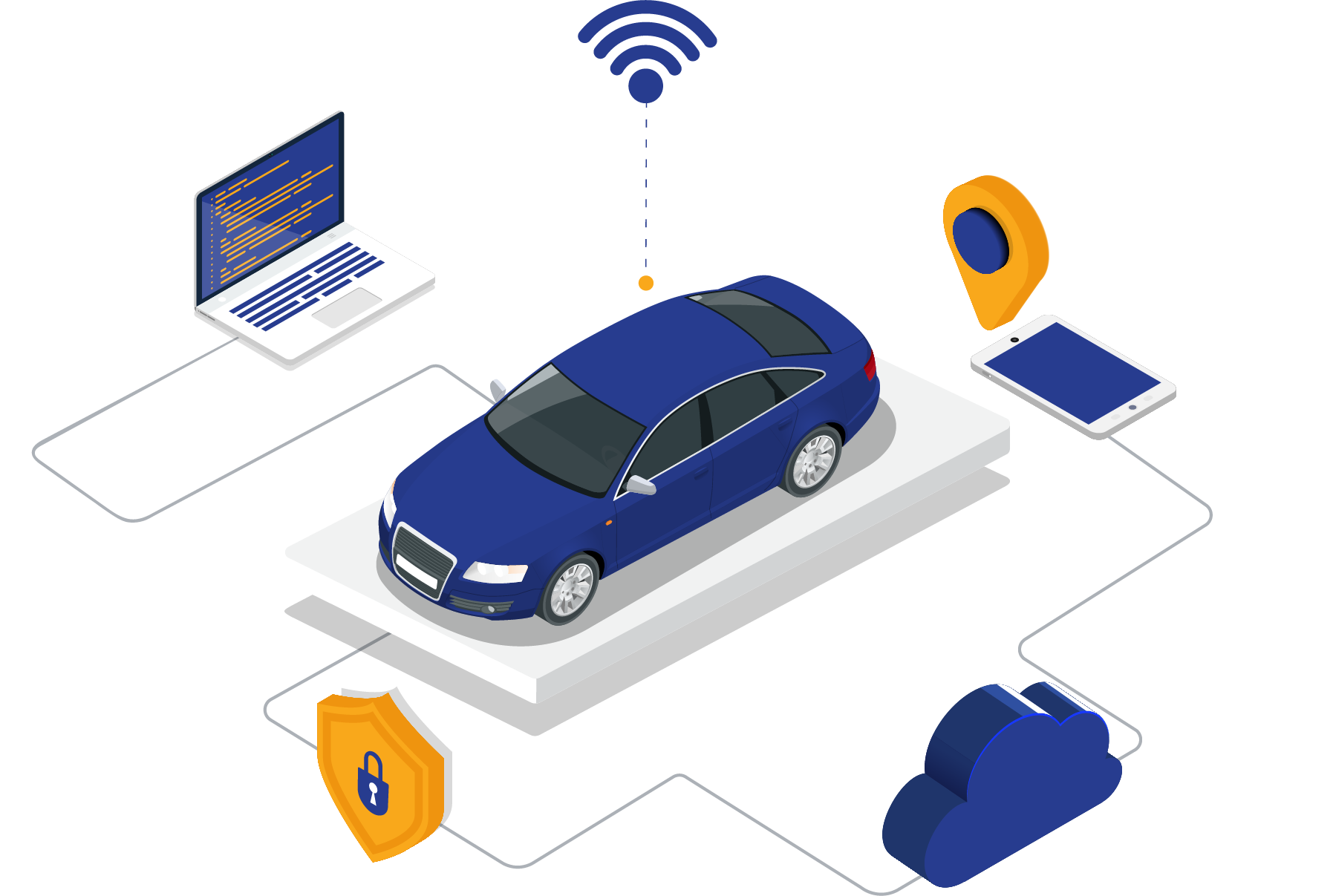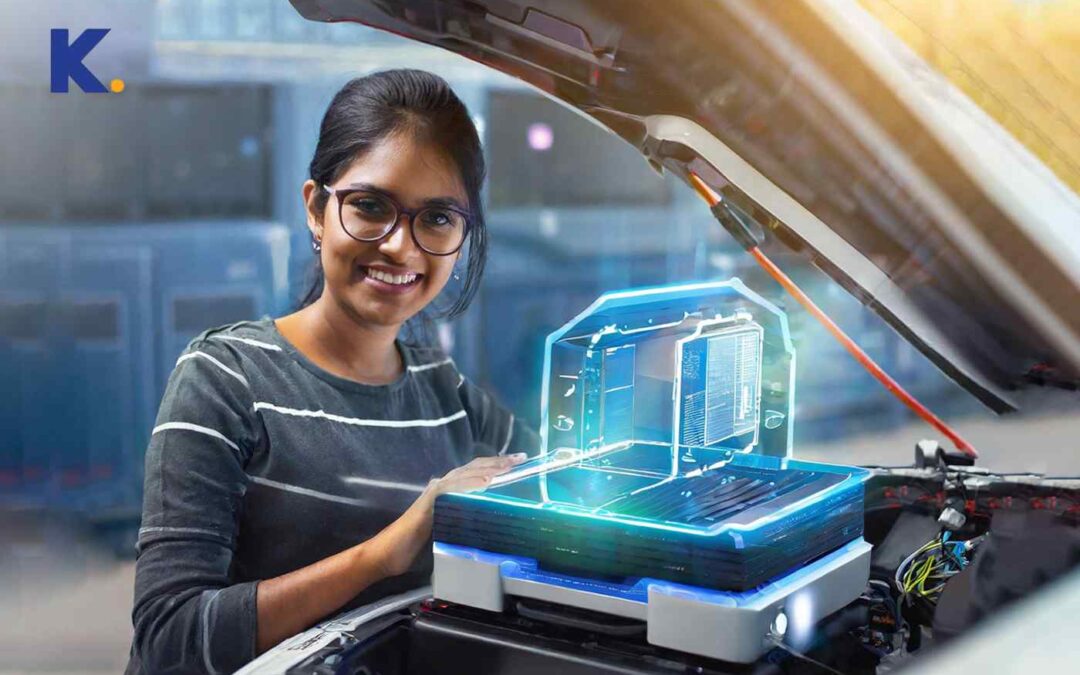

Solutions for Automotive Cybersecurity
Our services to support end-to-end security are built around the Defense-in-Depth paradigm. During plan and build our offers include strategy, assessment and implementation, and they address the three areas connected vehicle, manufacturing and enterprise IT. We aim to build in proactive measures from the start, so that security is an integral part of the deliverable.
Leverage KARNEX’s extensive experience and expertise to safeguard your product efficiently and effectively. We provide comprehensive consulting services covering security matters, including threat analysis, security strategies, architecture design, and the implementation and testing of all security features. When integrating security functions into ECU software, KARNEX facilitates the use of diverse hardware trust anchors from various manufacturers.
Securing vehicle functions from unauthorized access and manipulation remains a core challenge for both present and future ECUs. KARNEX collaborates closely with automotive OEMs and suppliers in this domain. Through our services, we can play a pivotal role in safeguarding your valuable data by employing swift and resource-efficient cryptographic functions within the ECU.
Our Automotive Cybersecurity Services


Internal Vehicle Communications
- Protected Data Storage.
- Verified frame transmission, such as through Secure On-Board Communication (SecOC), to prevent tampering with critical signals.
- Interactions with tire monitoring systems (for instance, using Bluetooth).

Vehicle Connectivity
- Smart Charging: Ensuring secure communication with electric charging stations.
- Car-to-Everything (Car2X/V2X): Validated data transmission between vehicles and infrastructure.
- Internet connectivity and hotspot provision for in-vehicle infotainment systems.
- Diagnostics, flash programming, remote access, and software updates via the (mobile) radio network (OTA).
Security Engineering
- Limiting security concerns solely to the choice of cryptographic algorithms is inadequate. Rather, security needs to be consistently considered from the conceptual stage through to post-sales procedures. KARNEX offers assistance in evaluating your existing processes.
Creation and Assessment of Security Frameworks
- KARNEX scrutinizes your security concepts and collaborates with you to devise enhancements with a suitable cost-to-benefit ratio. This ensures a solution customized precisely to your product.
Stay Ahead of Threats: Partner with KARNEX for Automotive Cybersecurity
Our Blogs
Taming the Terrain: Overcoming Software Integration Challenges in Electric Vehicles
Introduction The electric vehicle (EV) revolution is in full swing, but Tier 1 suppliers face a unique set of hurdles on the road to a sustainable future. While their expertise in traditional automotive engineering is invaluable, navigating the complexities of EV software integration presents a new challenge. At KARNEX, a…
Attracting Top Talent and Cultivating Innovation: The Keys to Success in Automotive Software Development
Introduction The skillsets required to design, develop, and integrate software into complex vehicles have expanded dramatically. Today's automotive OEMs need a new breed of engineers with expertise in: The automotive industry is undergoing a seismic shift. Software is no longer just an afterthought; it's the very fabric of modern vehicles.…
Contact Us

Frequently Asked Questions
What is automotive cybersecurity?
Automotive cybersecurity refers to the measures taken to protect vehicles and their systems from cyber threats, such as hacking, unauthorized access, and malicious attacks.
Why is automotive cybersecurity important?
Automotive cybersecurity is crucial because modern vehicles increasingly rely on electronic systems and connectivity. Without adequate protection, vehicles are vulnerable to cyber threats that could compromise safety, privacy, and data integrity.
What are the potential cybersecurity threats to vehicles?
Potential cybersecurity threats to vehicles include remote hacking, unauthorized access to vehicle systems, tampering with electronic control units (ECUs), interception of wireless communications, and exploitation of software vulnerabilities.
How can cyber-attacks affect vehicle safety?
Cyber attacks can affect vehicle safety by compromising critical systems such as braking, steering, and acceleration. Hackers could potentially take control of these systems, leading to accidents or other safety hazards.
What steps can be taken to improve automotive cybersecurity?
Improving automotive cybersecurity involves implementing robust security measures at various levels, including encryption of communication channels, authentication mechanisms, intrusion detection systems, secure software development practices, and regular security updates.
How can consumers protect themselves from cybersecurity risks while driving?
Consumers can protect themselves from cybersecurity risks while driving by keeping their vehicle software up to date, avoiding connecting to unsecured Wi-Fi networks, being cautious with aftermarket devices that connect to the vehicle’s systems, and staying informed about potential security threats.


